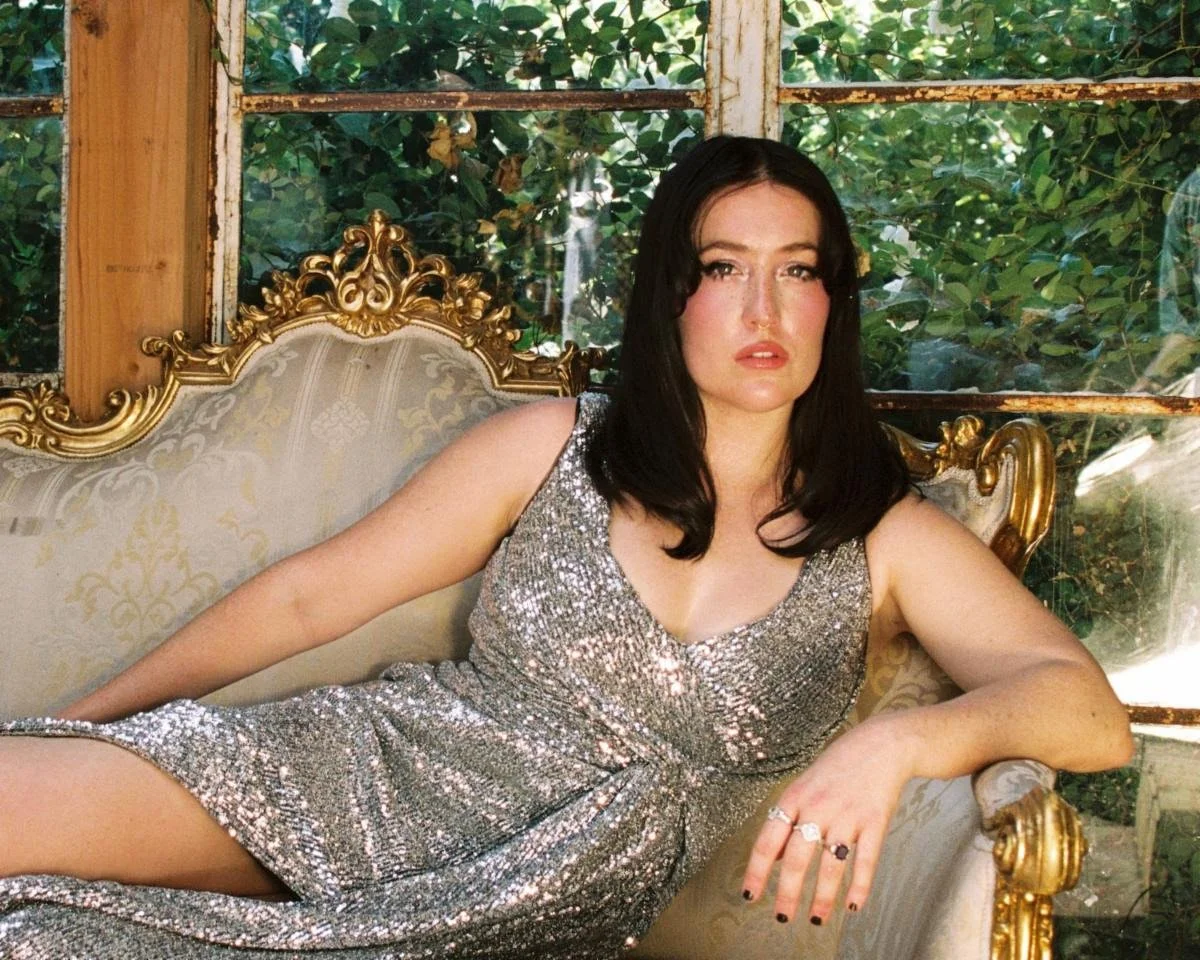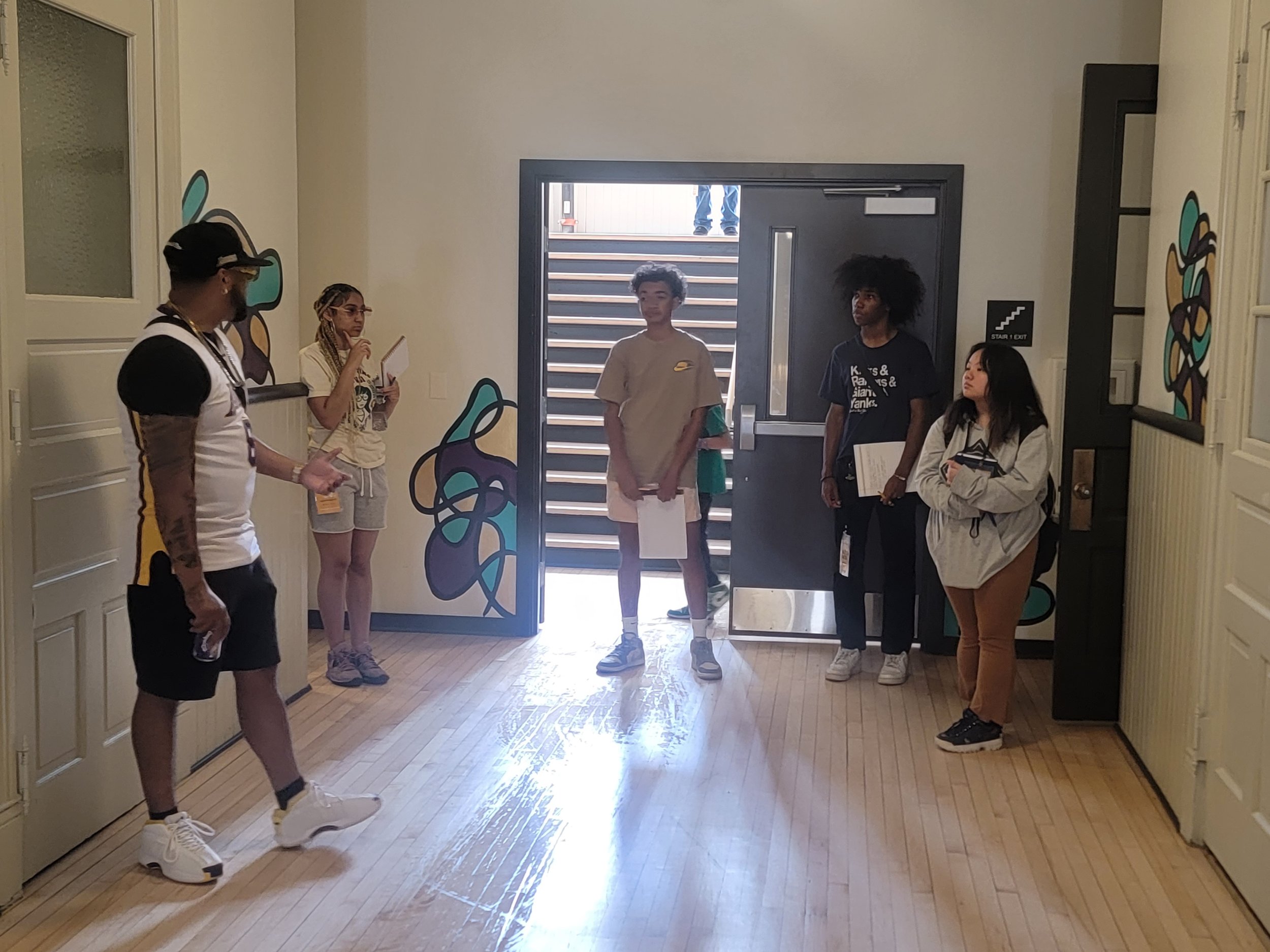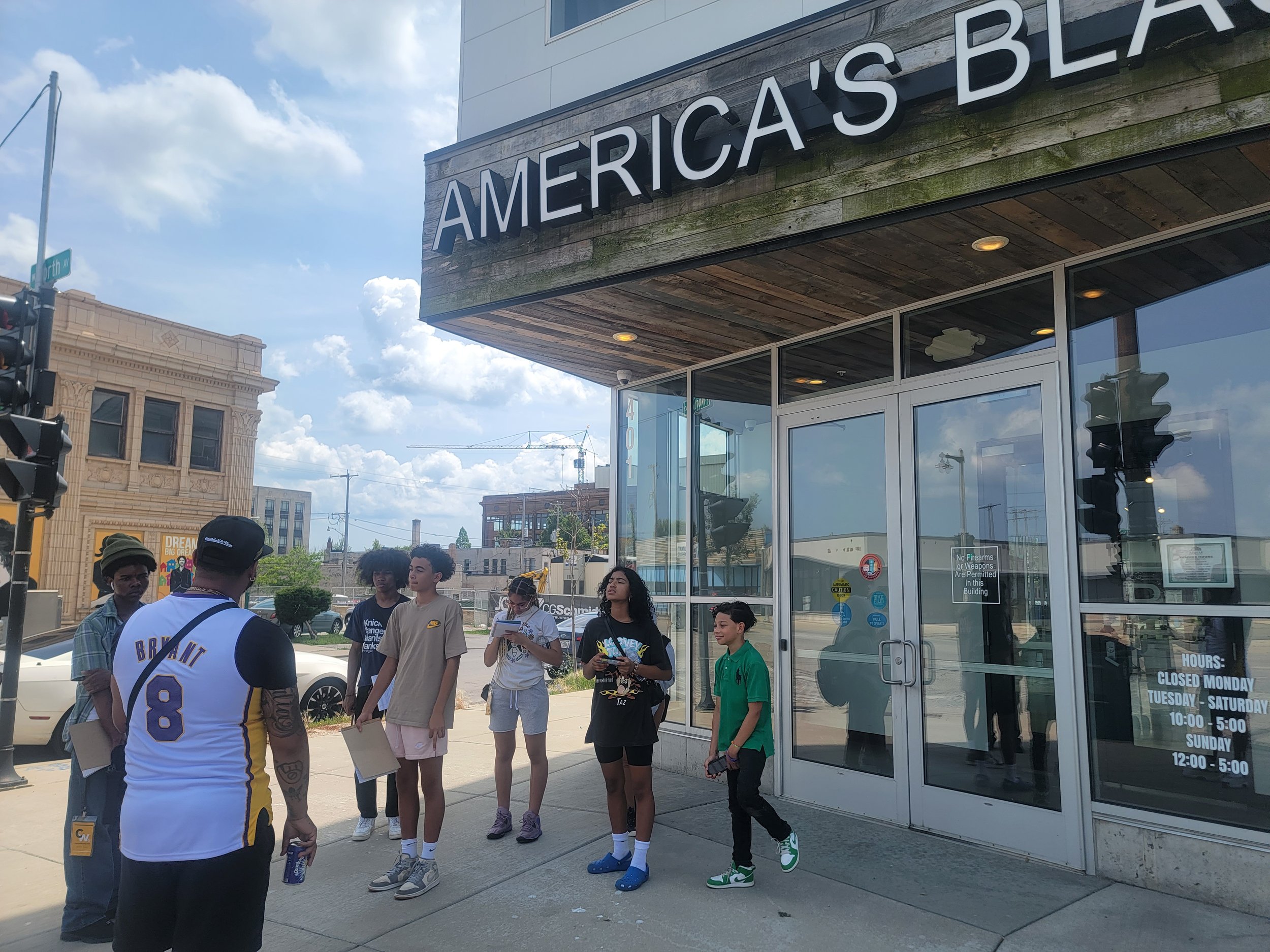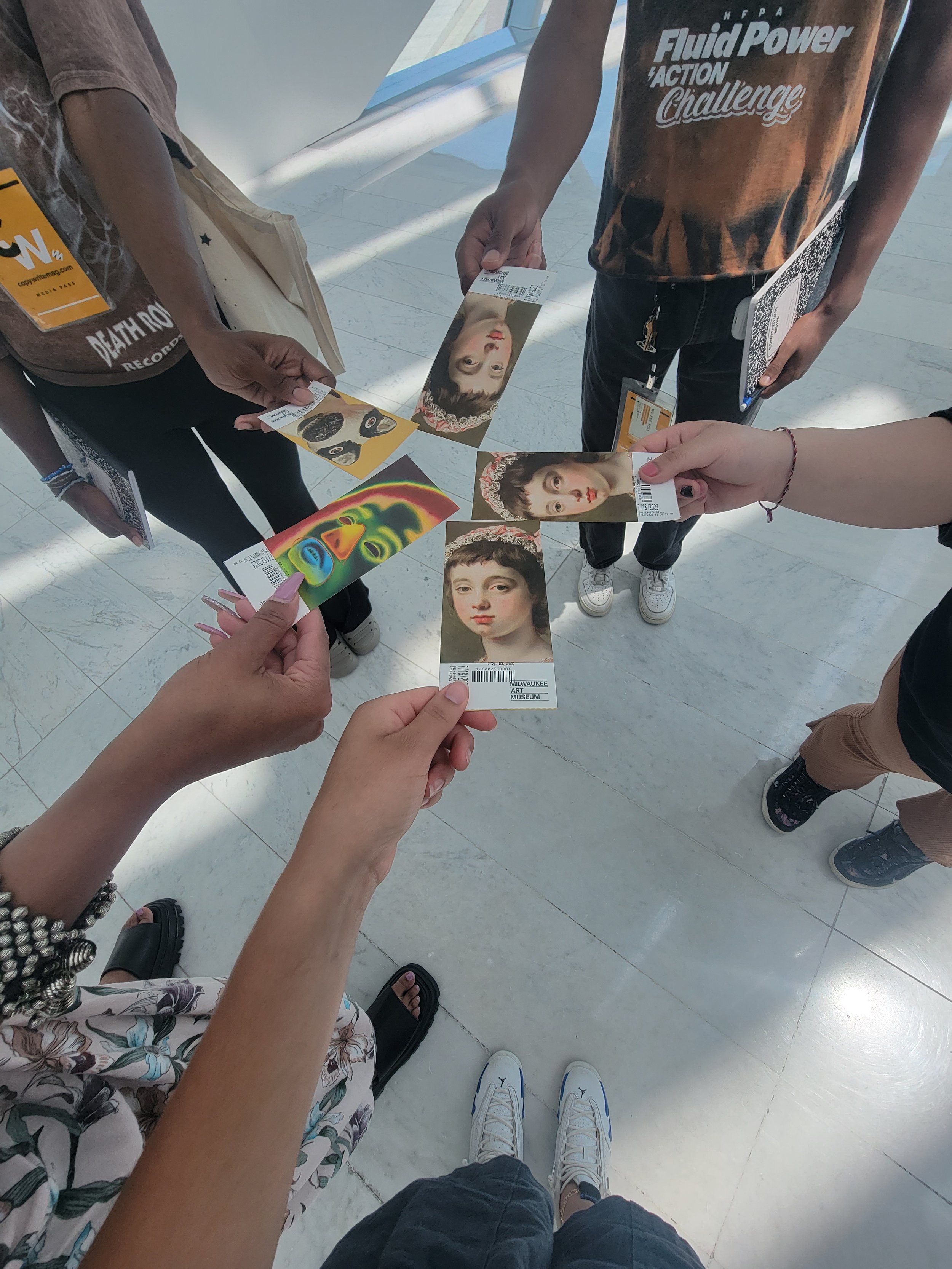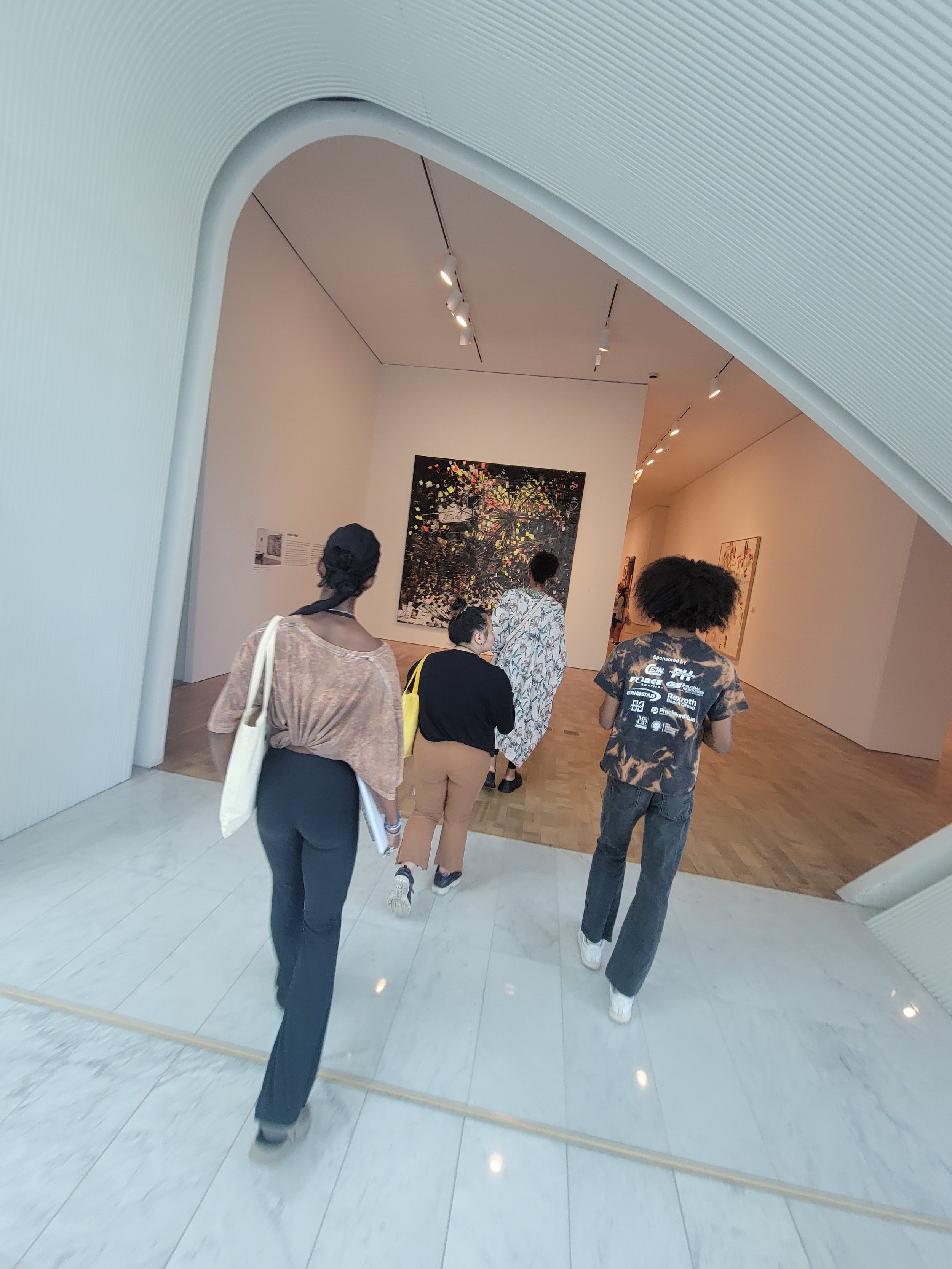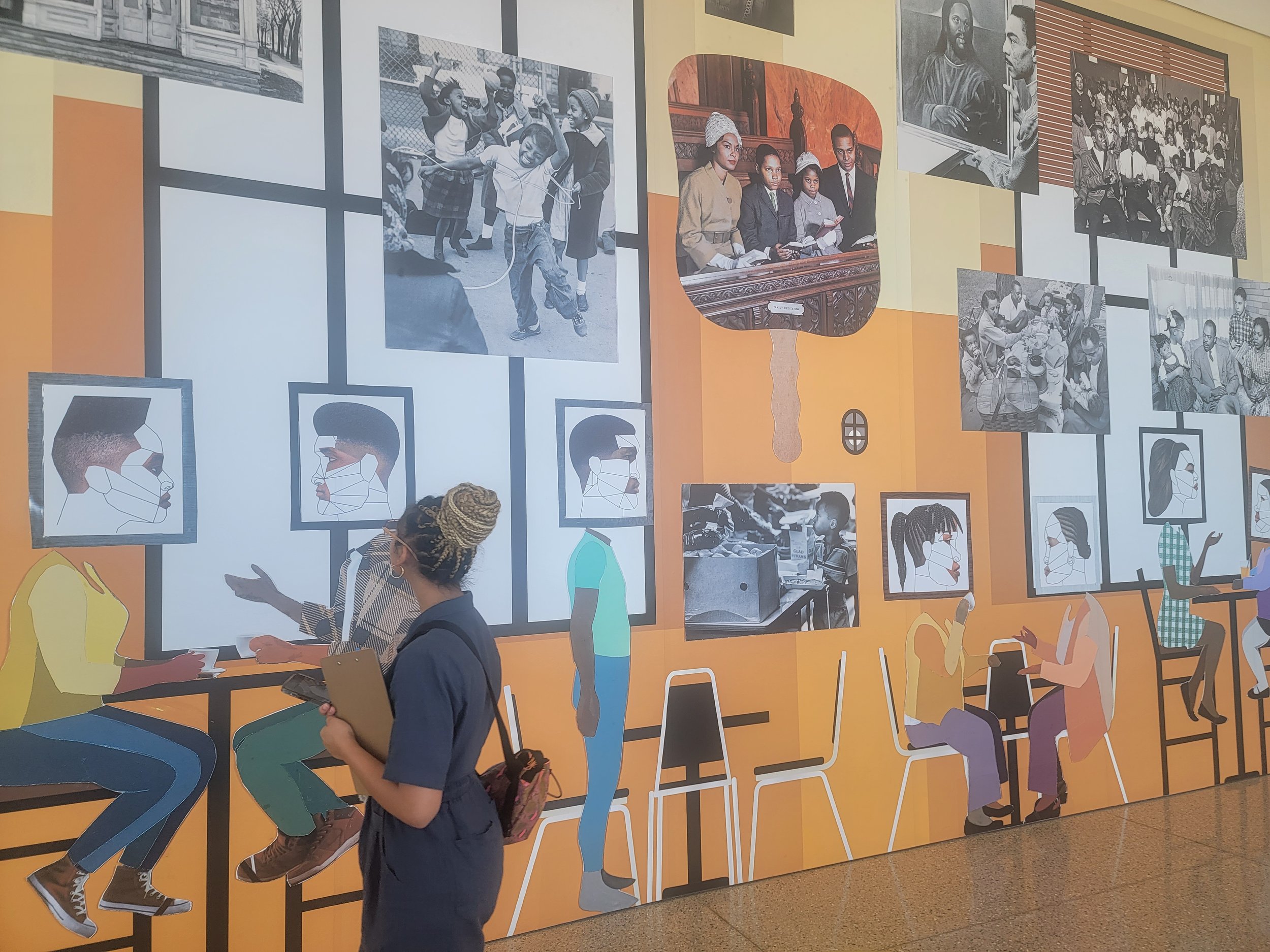Jazale Hill | Reflection
Outside Vs. In
You never know what a house looks like until you walk through the door. There are structures I drive or walk past daily and imagine what it might look like inside. Although most don’t think of a home as art or their neighborhood as creative, it is. The way many buildings are placed with grass in front, the side, the color, the shape, it is all art. It took creativity for someone to build your neighborhood, giving many a sight to see instead of just looking at cars driving, garbage on the roads, or civilians walking. A house is not just a HOUSE. IT IS ART.
The house I live in is art, LITERALLY. Vedale Hill, and partners at HomeWorks: Bronzeville plan to expand our neighborhood in Bronzeville. They hope it can be a legacy that changes - the community. 2408 N Vel R Phillips ave, a new legacy. The inside is a beauty but how the house looked 2 years ago when first purchased was not as appealing. Many would not think there's a balcony looking down from a mezzanine to the lower level, or that a huge chandelier is hanging in the middle of the gallery space with edison bulbs all over. This is because this house is not located in a neighborhood many would imagine a luxury house to be in. The Bronzeville area is known for many successful black owned businesses, as well as the poverty surrounding it due to inequitable policies. That is why many, but NOT ENOUGH of localists are planning to redevelop our neighborhood inside and out, while trying to offset the gentrification that is already happening. Meaning, not only will you notice changes physically upon buildings but in people as well, attempting to lower crime rate and stupidity spurring around, helping those in need, and expanding knowledge.
Around the city of Milwaukee there has been construction everywhere! Making it tricky for many to get to point A and B but these new additions and redevelopment in historical buildings such as ThriveOn King which will be located at 2153 N. Dr. Martin Luther King Jr. Drive and the Milwaukee Public Museum soon to be located in the Haymarket neighborhood on 6th and McKinley. Those two and many others are the start of sculpting a new future for many.
2408 N Vel R Phillips Ave, also known as the house on 4th and Meineke, is a Legacy building in my eyes. July 15th, 2023 was a day of celebration because one house got demolished of the three buildings on the property. It is the most expensive show I will ever see [costing $50,000 to demolish due to a faulty foundation], the most genuine show I will ever see, and the most impactful show I will ever see. It was a day of freshness and renewell, because Vedale Hill, my father, will start and continue to build his legacy of ART for his community and family.
“Come Out And Show Them”
July 18th, 2023 Jazale’s Art Studio and Summer interns of Copywrite Magazine took a trip to the Milwaukee Art Museum to make a comparison of the Bronzeville neighborhood and soak in the art displays.
Glenn Ligon’s (2015) “Come Out and Show Them”, is an art piece that “ visually echoes” Steve Reich’s song (1972) “ Come Out” inspired by a trial of two men, wrongfully accused in Harlem during spring of 1964. Wallace Baker and Daniel Hamm at just the age 18, were tried and brutally beaten by 6 to 12 officers. In custody; they were then taken to a nearby hospital for treatment. Because Hamm was severely bruised but not bleeding the cops weren’t going to acknowledge the need for any treatment for Hamm. So, in order to get treatment he had to show proof and he said “ I had to, like, open the bruise up and let some of the bruise blood come out to show them.” [My research says].
This then became symbolism against police brutality, and inspiration for Steve Reich’s song, that then became inspiration for Glenn Ligon “large black-and-white silkscreen paintings” that is covered edge to edge with the phrase “come out to show them”. A part of this collection is displayed in the Milwaukee Art Museum, which is where I was visually drawn to. Then, I read the description and it hit me, “that’s deep.”
“Come out and show them,” was very inspirational to me; the way the colors of black and white flowed, walking along the words becoming visible. It turned out not to be just words, it's meaningful to Black society, and it made me think of not only the story of Wallace Baker and Daniel Hamm but others who were victims of police brutality. The physical appearance of this art piece is an aesthetic of Black culture with a mixture of layers visible to the eye. Then the mental aspect of this piece is a far deeper story of inspiration and Black reality.
The Outside vs. Inside will forever be a barrier to many. Once you meet the physical you just have a moderate understanding, but when you meet the mental you have a new world of appreciate, that can inspire many. Art is one of the many ways that a human mind can be reshaped whether it’s expanding or introducing new information. Glenn Ligon’s “Come Out And Show Them,” introduced new information and broadened my imagination. I was able to see an example of art that was inspired by music which I have never seen before. I was also interested in the story of Wallace Baker and Daniel Hamm which is an important aspect of history I enjoy learning about.
Sources:
Beta, Andy. “Blood and Echoes: The Story of Come out, Steve Reich’s Civil Rights Era Masterpiece.” Pitchfork, 28 Apr. 2016, pitchfork.com/features/article/9886-blood-and-echoes-the-story-of-come-out-steve-reichs-civil-rights-era-masterpiece/.
Tani, Ellen Y. “‘come out to Show Them’: Speech and Ambivalence in the Work of Steve Reich and Glenn Ligon.” Art Journal Open, 21 July 2020, artjournal.collegeart.org/?p=13202.


